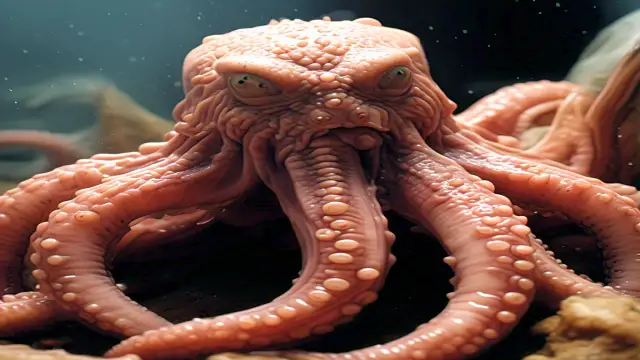The mid to late 1970s sparked a fascination with dangerous sea creatures. Steven Spielberg’s blockbuster Jaws hit theaters in 1975, captivating audiences and inspiring studios to create similar films. Movies like Piranha (1978) and The Deep (1977) drew crowds eager for aquatic thrills. One film that stood out was Tentacles (1975), featuring a giant, man-eating octopus and well-known actors like John Huston and Shelley Winters. Although the film disappointed, it piqued my interest in sea monsters and the legends surrounding them.
Recently, a reader emailed me about the so-called Oklahoma octopus. I had heard whispers of this creature but hadn’t explored the topic. Intrigued, I decided to dig deeper into this tale, which seemed to echo the thrilling stories of my youth.
The Legend of the Oklahoma Octopus
According to Native American legends, a strange creature lurks in Oklahoma’s lakes. Described as horse-sized with reddish skin and long tentacles, this beast is said to have a taste for human flesh. Allegedly, it inhabits Lake Thunderbird and Lake Tenkiller, both of which have high drowning rates and mysterious swimmer disappearances. The legend gained traction after being featured on the Animal Planet show Lost Tapes. But is there any truth to this story?
Searching for Evidence
I found little hard evidence supporting the existence of an octopus in Oklahoma. However, one intriguing incident occurred in Arkansas, just east of Oklahoma. On December 1, 2003, John Mazurek caught an octopus at Lake Conway. Arkansas Fish and Game confirmed the catch but were baffled about how the octopus ended up in a freshwater lake. They speculated that someone might have released it after it grew too large. This incident raises questions about how long a marine octopus could survive in freshwater, but it does lend some credibility to the legends.
Challenges to the Legend
Despite this incident, several factors challenge the idea of an octopus population in Oklahoma’s lakes. First, there are no natural lakes in the state. All lakes are man-made reservoirs. Lake Thunderbird was created between 1962 and 1965, while Lake Tenkiller was built between 1947 and 1952. This timeline makes it unlikely that the alleged Native American legends about the octopus are genuine.
Supporters of the octopus theory might argue that these creatures lived in rivers before the lakes were formed. However, I found no evidence of such beliefs among Native American tribes. If anyone has credible sources documenting these legends, I would love to hear about them.
Survival in Freshwater
Some argue that certain marine animals can survive in freshwater, citing examples like bull sharks and stingrays. However, no cephalopod species has demonstrated this ability. The argument for the Oklahoma octopus lacks scientific backing.
If the lakes were closer to the coast, the idea might be more plausible. For instance, if the creature were reported in brackish waters like Sabine Lake in Texas, it would make more sense. But Oklahoma is too far from a marine environment for a breeding population of octopuses to exist.
The Role of Media
Believers often point to the Lost Tapes episode featuring the Oklahoma octopus. The episode includes shaky footage of a splash, but the evidence is far from convincing. Lost Tapes and similar shows often blur the line between fact and fiction, leading viewers to question their credibility. Relying on such programs to support the existence of the Oklahoma octopus is shaky at best.
Expert Opinions
Dr. Elizabeth Bergey from the Oklahoma Biological Survey provides valuable insights into the topic. In a video interview, she discusses the challenges of finding evidence for the octopus and the reliability of eyewitness accounts. While the video veers into discussions about other invasive species, Dr. Bergey’s expertise is worth noting.
Conclusion: A Good Story?
As someone who believes in the possibility of undiscovered creatures like Bigfoot, I find it curious that I remain skeptical about the Oklahoma octopus. I need more substantial evidence to support its existence. While the legend is captivating, it seems to be just that—a story.
In the end, the Oklahoma octopus may be a fascinating tale, but without credible evidence, it remains a myth. The allure of sea monsters continues to capture our imagination, but sometimes, the truth is simply a good story.

